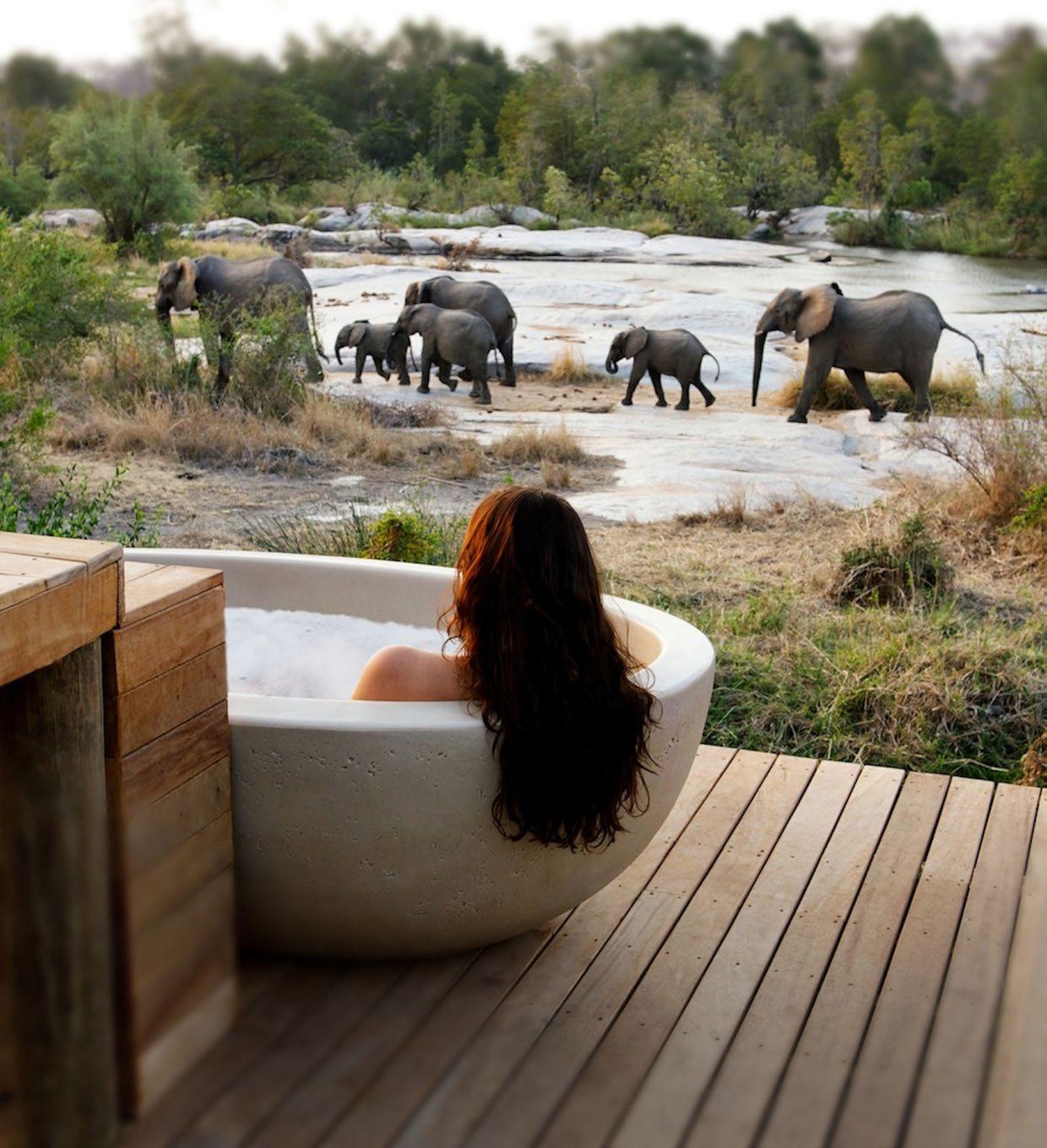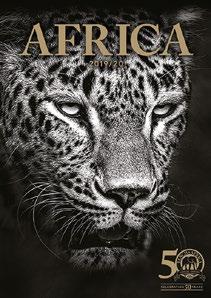SA ARI UID











Lions are the most iconic animals in Africa, and one of the most soughtafter safari sightings. The thrill of seeing them in the wild is indescribable; perhaps because it triggers such a primal reaction in each of us.
In the run up to World Lion Day on the 10th of August, we are devoting this issue of The Safari Guide to celebrating The King of the Jungle, shining a light on the inspiring projects and individuals that are forging ahead in this conservation space.
Every individual animal matters, whether it’s Elsa the lioness, whose poignant story of freedom inspired several generations of animal lovers, or Cecil the lion, whose death elicited a global outcry against lion hunting. In retelling their stories, we hope to remind you of the plight of lions in the wild, and inspire you all to act with vigour to safeguard the future of these magnificent beasts.
LARA BEHRENS EDITORCAMP MANAGER – ELSA’S
George hails from Zimbabwe originally, where he was a guide and camp manager. Arriving in Kenya in 2013, he managed Joy’s Camp in Shaba, with his wife Theresa. Now, they call Elsa’s Kopje home, where they continue to passionately share the ‘Born Free’ story with their guests.
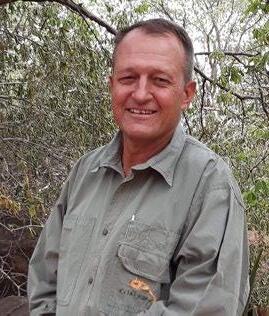
Maria caught the ‘Africa bug’ on a trip from Johannesburg to Nairobi, back in 2008 and the rest is history! From scaling dunes in Namibia to floating down the Okavango Delta in a mokoro, Maria’s love affair with Africa spans ten years… and counting.
GENERAL MANAGER – BENCH AFRICA
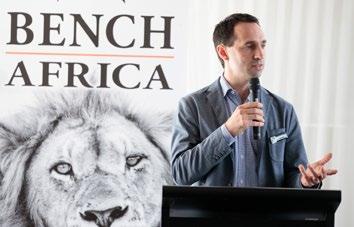
The lion plays a significant role biologically, culturally, symbolically, and economically but sadly the number of lions in the wild is steadily decreasing. In the 50 years that Bench Africa has been operating, the African lion population has decreased by 90%, down from 200,000 to now just 20,000, which is a truly devastating statistic! The proven and most sustainable approach to boosting conservation in Africa is through responsible tourism. So, if you haven’t yet been to Africa, I strongly urge you to go and see what all the fuss is about!
Jennifer has been in the safari travel industry for just over 2 years but Africa courses through her veins. She has been privileged to travel all over Africa, and her top memories include a walking safari with painted wolves in Mana Pools National Park, with African Bush Camps.

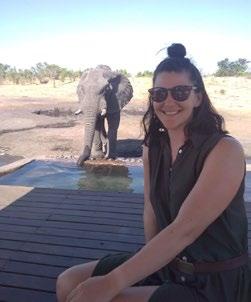

With over 20 years’ experience under her belt, Julie is one of Bench Africa’s longest serving team members. Her knowledge and passion are truly exceptional, and she is a proud ambassador for the continent of Africa.

Unveiling the latest new properties and activities on the lesser-trodden trails of Africa.
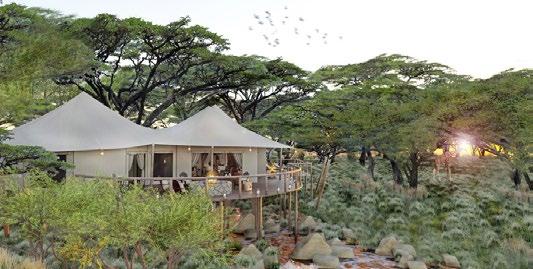
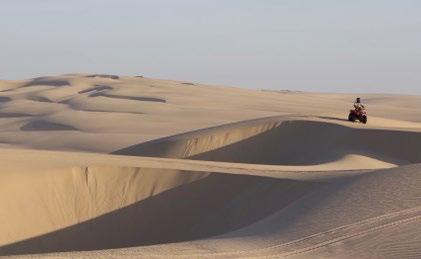
On a quad bike safari
Glide across this remarkably unique eco-system and along shapeshifting sand dunes, on a quad biking safari from Shipwreck Lodge. This area of Namibia contains irreplaceable and vulnerable wildlife habitat for species of the highest conservation importance, including black rhino, elephant, black faced impala and the Hartmann’s mountain zebra, as well as haunting shipwrecks.
As Mara Nyika throws open its doors
“Nyika” means “Large Plains” or “Great Plains” and as such Mara Nyika is the perfect sister camp to Mara Plains, in the Masai Mara. It rings with the romance of the vast open plains of East Africa from a time when light canvas flapped in the light breeze across those plains as the great lions roar across the Nyika.
At the newly refurbed Jao camp
On a remote island in the heart of the Okavango Delta, luxurious Jao Camp is fringed with riverine forests and vast, floodplains with prolific wildlife. The camp perfectly mirrors the beauty of the Delta and allows an effortless entry into the wonders of this pristine wetland paradise. And with the best spa experience in the Delta, there’s no better place to relax and reconnect with nature.
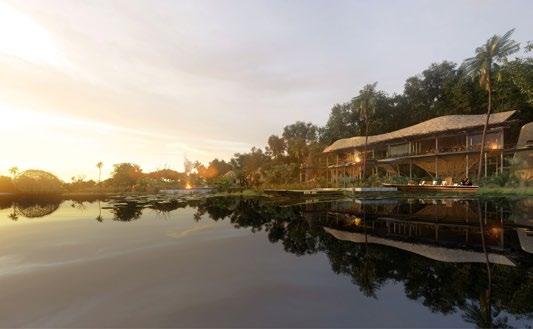
Staying at one of these eco-sensitive lodges
Rwanda is fast establishing itself as the most significant sustainable destination in Africa. Rwanda’s most beguiling experience is, of course, a close encounter with the endangered mountain gorillas. In 2017, Wilderness Safaris led the way, opening the eco-chic Bisate Lodge and now others in the conservation and hospitality industry are following suit. 2019 will see the opening of two more lodges, offering travellers luxurious and sustainable accommodation for those who wish to trek to see the gorillas. One&Only Gorilla’s Nest is expecting to open in July 2019 and Singita Kwitonda Lodge is due to open in August 2019.
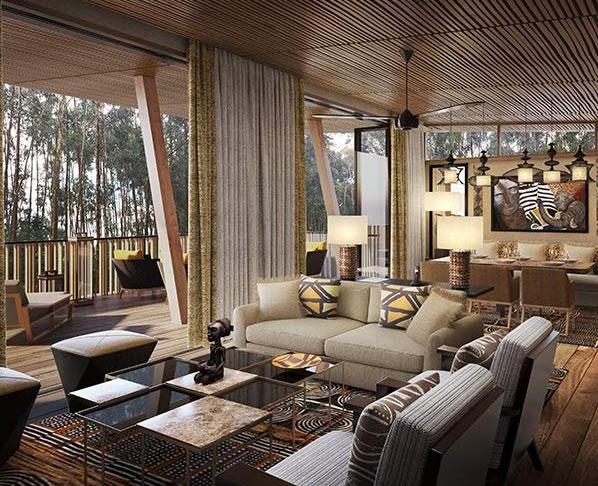

Habitat loss, human-wildlife conflict and hunting have all contributed to the steady decline in lion populations. Lions are currently on the brink of extinction; however, all is not lost! In the past, wherever these human pressures have been eased, lion populations have been able to bounce back. There are simple solutions to this tragic issue, but they demand a global response.
So, what can we do?
Stay informed, speak up for wildlife, travel responsibly (that means no lion walks or lion petting) and you can act!

Join the Great Plains Foundation’s mountain bike Ride for Lions cycle safari. Designed for conservation-minded individuals to help fund and expand the amount of conserved land where lions can roam freely. Not only can you demonstrate your commitment to conservation, but also intimately experience the land being conserved throughout the course of your adventurous cycle.
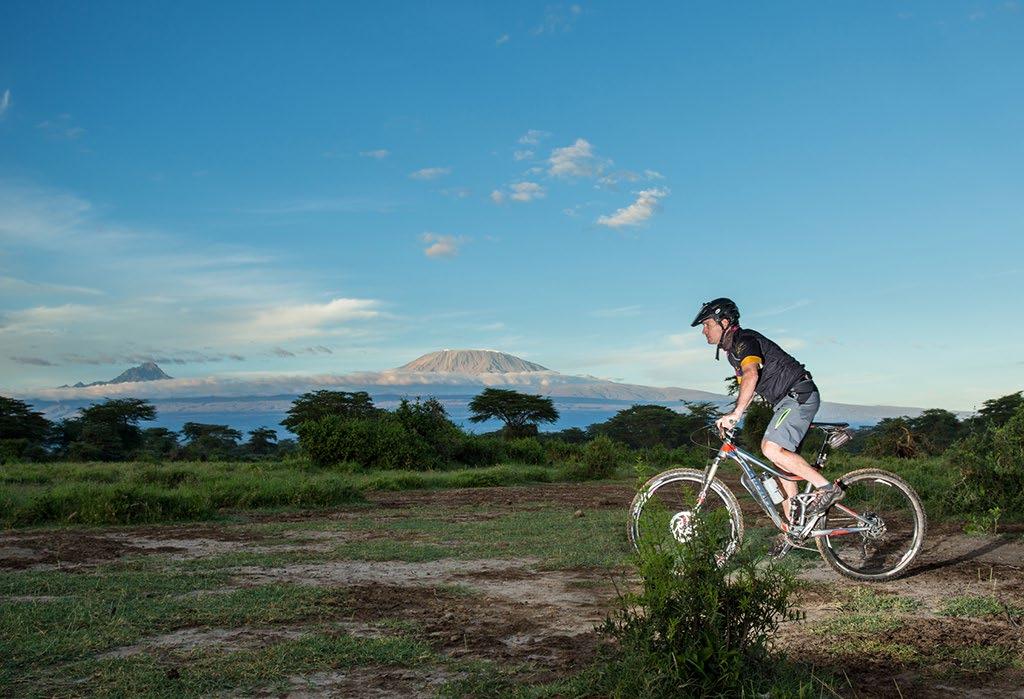
If you have experience or an academic background in conservation this might be up your alley. Lion Landscapes is a conservation organisation, operating in Africa, partnering with local stakeholders to develop holistic programs that support lions, their prey, the habitat and local people.
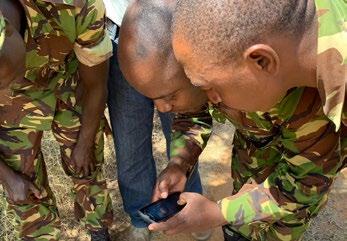
In partnership with the Lion Recovery Fund, Africa’s leading ecotourism operators, &Beyond, Ultimate Safaris, Singita and Wilderness Safaris, have joined forces to launch the Lionscape Coalition – an innovative initiative that has seen four commercial competitors come together to help secure a future for Africa’s lions and their landscapes.
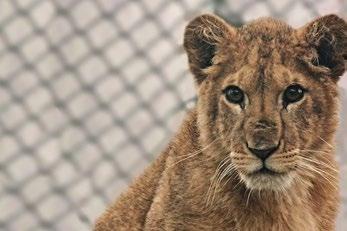
In 1966, Virginia McKenna and Bill Travers starred in the classic wildlife film Born Free. The film told the true story of conservationists Joy and George Adamson who rescued a lioness cub called Elsa. They went on to make a number of wildlife films together, before launching a charity that evolved into the Born Free Foundation. For the price of a sandwich you could adopt your choice of lion in need, just like King, the little lion cub in this video.
A gift to the AfriCat Foundation, Namibia in your will means that your memory will live on. The organisation believes in conservation through education, striving to create a peaceful existence between communities and wildlife, particularly their large carnivores.
The Legacy of Cecil, The Legend of Hwange National Park
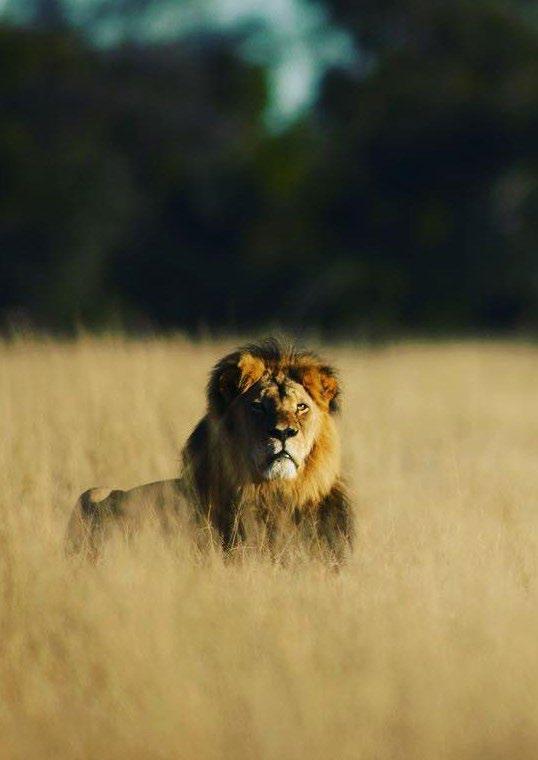 WITH JENNIFER SOUTHWELL AFRICAN BUSH CAMPS
WITH JENNIFER SOUTHWELL AFRICAN BUSH CAMPS
Cecil’s story resulted in the biggest global response to a wildlife story there has ever been. Cecil was a legend, a force of nature, a lion that exuded a supreme prowess. And sadly, he was taken well before his time. This is a story of his life and legacy, told by a man who knew him well…
As we sit around the campfire at Somalisa Expeditions and the scarlet sun sinks behind the acacia-strewn horizon, Calvet reminisces of the ‘tale of territories’. Growing up in a small village in Southern Zimbabwe instilled a passion for the African Bush in Calvet. He started as a guide in 1995 and exudes a wealth of knowledge and contagious enthusiasm for the wild. Calvet is well known for his engaging story telling capabilities, especially when it comes to Cecil. His jocular manner and enchanting insights enhance an already intimate and enriching safari experience. He speaks of the lions as if they are old school friends and as we gather around the fire at Somalisa Expeditions, we are in no doubt that this tale will be no exception…
As part of an Oxford study, Cecil was tracked using a GPS collar in order that he could be researched. This is why he received a name. He was also known as the ‘Hercules of Hwange National Park’, and was so prominent that many travellers came from far and wide just to get a glimpse of him. With a thick, coal-black mane, and mighty frame, he was the epitome of strength and prowess, his golden eyes seemed to look straight through you and his poise was unparalleled; he certainly was a sight to behold.

“It all started with Cecil and his son Xanda, they had a pride of 16 strong.” Calvet begins. They dominated the Eastern territory of the National Park in the Linkwasha Concession. Until brother coalition; Bush and Bhubesi appeared from the Northern territory. Cecil and Xanda battled with them, you can imagine what kind of scene it must have been when four large males clashed. Brute strength. Aggression. You could hear the bellow and thunder of lions
roaring… and blood. Cecil and Xanda managed to hold their ground and chased the brothers. The territory was safe. For now.
“This is when Cecil made a mistake”, Calvet says. After this confrontation, Cecil noticed that his son was becoming stronger. Threatened by this, he chased him out of the pride. Which is when Bush and Bhubesi took their chance to expel Cecil from Linkwasha, once and for all.

“In 2013, Beks, Founder of African Bush Camps, invited me to work here at Somalisa.” Calvet recalls. “At the same time, Cecil has been chased out of his territory, so Cecil followed me here.” Kokore was the resident lion at the time. Cecil was thin and weakening at this stage, not exhibiting much stamina or strength. He tried to submit to Kokore so as to form a Coalition but Kokore rejected him; concerned that Cecil would kill the cubs in his pride.
Luckily, Cecil found Jericho, another large lone male. The two had some history. “Legend goes, that the father of Jericho, killed the father of Cecil, in a fight so they were enemies.” After some time, however they decided to put their differences aside and joined forces. They moved into the Somalisa Concession. Despite their union, unrest and turmoil lingered between them and numerous battles ensued in the time that they reigned over Somalisa. This was attributed to the abundance of testosterone, and consequently dominance over food and females was the issue. However, after each battle they always reunited. They knew they were stronger together than they ever would be apart.
WITH A THICK, COAL-BLACK MANE, AND MIGHTY FRAME, HE WAS THE EPITOME OF STRENGTH AND PROWESS.Cecil left, Jericho right
“They advertised,” Calvet says, with a big burly voice, uncannily imitating the roar of the beasts. This roar conveys many messages. They are expressing to the females in the area that they’re looking to grow their pride. They express to the males in the area they are ready to take over, by any means necessary. When a lion roars, it reverberates in your being and strikes fear into your soul. It takes you to your ancient roots and sends you to a wild and true Africa. You understand instantly why they are at the top of the food chain. And, the louder and more intimidating they sound, the more they appeal to the lionesses in the area…
Hearing the two large males, Kokore was not impressed and at one point attempted to take them on, however when he saw their size and sheer power he retreated, leaving his pride in submission. Cecil and Jericho were on top, now the “Kings of Somalisa”.
They introduced themselves to the pride’s lionesses but these ladies ran away, trying to safeguard their cubs.
Unperturbed, Cecil and Jericho continue ‘advertising’ to publicise that they were in charge of the territory and that they were looking to grow their pride. Hearing their mighty roars, three lionesses appeared. They came to be affectionately known as ‘The Spice Girls’. According to Calvet, they saw these two men and thought “Yes, these are the guys we want, let’s see what’s going to happen here”.
In 2014 they ‘entertained’ the boys, Calvet said giving a cheeky smile and a laugh.
The lionesses stayed with the boys for a while, mating in false oestrus to create bonds and build trust. By mid 2014 the girls trusted Cecil and Jericho and so went into true oestrus. By September they were pregnant and in December 2015, the spice girls had 7 cubs; 2 boys and 5 girls. “A happy family” Calvet recalled jubilantly, “And for a while they lived the perfect life in Somalisa”. The pride had grown to 12 strong and as Jericho was submissive, it was believed that all of the cubs were Cecil’s.

Yet the growing pride meant different challenges...
The growing pride meant that they were struggling for space and food. They needed to extend the territory. Jericho ventured further north up to Kennedy 1, near the railway line. Beyond the railway line is the forest concession, also known as the hunting concession. Jericho found an old lioness called Cathy who was alone. Although she never gave birth to his cubs she kept him company and “kept him entertained”.
Jericho reported back to Cecil that he had discovered more territory and together they moved to Kennedy 1. “Cecil saw Cathy and he was so happy! I imagine he said ‘Well done my friend, Jericho.’” Calvet said with a huge laugh while patting me on the back, taking on the role of Cecil in his own story.
They stayed with Cathy for long periods before returning to Somalisa for brief intervals to check in on the cubs.
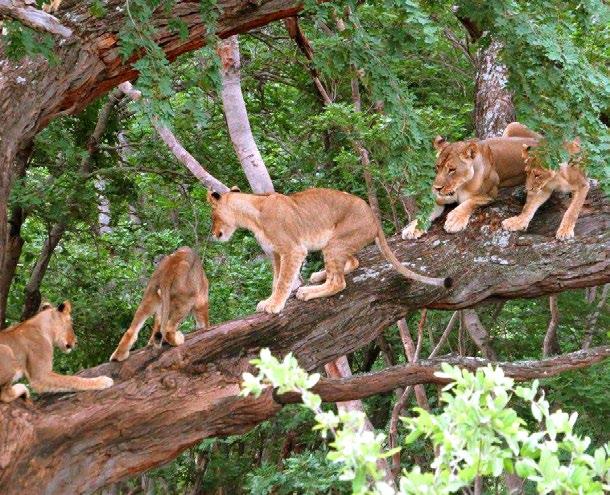
In June 2015, Cecil had been in the north of the park for over a month, sadly edging closer to his infamous, cruel fate.
It was in July 2015, that Cecil left the safety of the National Park and crossed into the hunting concession where a recreational game hunter sadly ended his life.
Cecil was 13 years old.
Calvet believes that “they chose Cecil because he was so handsome.”
Most people will have heard about Cecil, the undisputed king of this part of the savannah. The incident ignited a furore, sending shock waves across the entire world but for the guides in the park who had come to know Cecil on a personal level, they were all truly shaken to the core.
“Just like that, he was gone.”
Silence. All we hear now is the fierce crackling of the fire as Calvet composes himself.
With tension in his voice, Calvet continues…
“It feels like it’s the end of the story, but in truth it’s not.” As with the rhythm of the African sun, it rises again, and life moves forward. Like many of the guides in the area, Calvet moves his focus to the legacy that lives on in Cecil’s pride.
Jericho remained in the North. He didn’t come back to be with the pride. He stayed with Cathy and was joined by two other lionesses, who he went on to mate with and so too became a father of 5.
Cecil’s legacy lives on through his cubs, still in the Somalisa Concession, with the ‘Spice Girls’, and the story of Cecil’s Pride continues.

“As the pride shifts and changes, people from around the world come to see his legacy endure.”
Authentic Zimbabwe is a fly-in safari rich in culture and unique wildlife encounters. Combine the natural wonder of Victoria Falls, with an exploration of two of Zimbabwe’s most famous national parks – Hwange National Park and Mana Pools National Park.

“The science is clear; lion populations decline where there is hunting.” – Dereck Joubert
Dereck Joubert is a globally renowned, award-winning filmmaker and conservationist. In 2009, he founded the National Geographic Big Cats Initiative, a long-term labour of love to halt the decline of big cats in the wild and protect the eco-systems they inhabit.
With decades of conservation work under his belt, Dereck Joubert states that very little revenue from hunts end up supporting wildlife initiatives. Outside sources agree, estimating that only 3-5% of hunting fees are paid to conservation groups. This means that as little as $1,500 of Walter Palmer’s $50,000 fee has been invested in conservation.
The proven and most sustainable approach to boost conservation in Africa is through responsible tourism. Choose an operator that has upheld conservation standards, integrates with the local community, and fosters relationships between travellers, locals and wildlife.
IT FEELS LIKE IT’S THE END OF THE STORY, BUT IN TRUTH IT’S NOT. AS WITH THE RHYTHM OF THE AFRICAN SUN, IT RISES AGAIN, AND LIFE MOVES FORWARD.
The lion is synonymous with wild Africa. Nothing stirs a sense of wonderment quite like the proud stance and flowing mane of these big cats and for centuries, lions have been rooted in our hearts and minds as symbols of beauty, strength and bravery. Few people realise however, that the species has undergone catastrophic decline.
Only six countries unequivocally harbour more than 1,000 wild lions: Tanzania and Kenya in East Africa, and Botswana, Mozambique, South Africa, and Zimbabwe in Southern Africa. A seventh country, Zambia, has close to 1,000 lions.
For the best chance of seeing lions in the wild, I urge you to head to one of Africa’s ‘lion hotspots’. Here are a few of my favourites…
The Greater Kruger National Park is one of the world’s most well known wildlife destinations and home to the majority of South Africa’s wild lions.

STAY: Set above the seasonal Sabi River on the prime Sabi Sand Central Reserve to the west of the Kruger area in South Africa, Singita Boulders Lodge is an extremely high quality property with an excellent range of expertly guided safari activities. Singita is a conservation brand that has been preserving African wilderness for the past 25 years who have recently joined forces with other leading ecotourism operators to form the Lionscape Coalition – See Page 5.
Listen to a lion calling in the distance and feel every sense awaken as you open your eyes in one of the wildest places on the planet, ready for a sunrise walking safari. The South Luangwa is renowned for its world-class predator action, with frequent sightings of sizeable prides of up to 30 lions.
STAY: Situated on a sweeping curve of the Luangwa River, Time + Tide Chinzombo brings style and sophistication to the Luangwa Valley. With grass and canvas walls this luxurious camp retains its bush authenticity in an exquisitely tranquil riverside setting. Time + Tide pride themselves on being “guardians of the most remote places on earth” and believe in conservation through education through the Time + Tide Foundation.
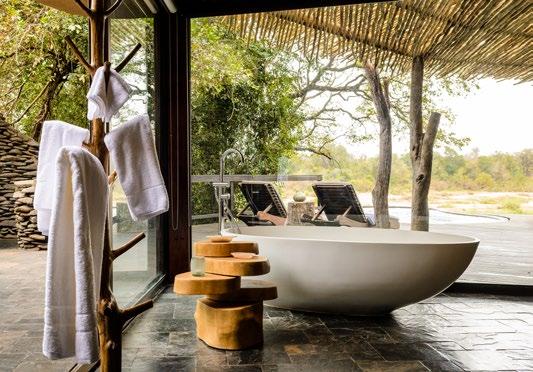
Spanning over 24,000km² from the Serengeti in Tanzania to the Masai Mara in Kenya, the Serengeti-Mara eco-system is home to one of the highest densities of lions in the world. You may be lucky enough to see tree-climbing lions, positioning themselves at a better vantage point to observe their prey when the grasses are longer in the green season.
STAY: Cottar’s 1920s Camp was established in 1919 and is vintage luxury at its best. Far-removed from the crowds, and with the highest number of Gold Level guides in one camp in the whole of Kenya you can expect to experience the very best in quality safari guiding. Cottar’s strive to achieve harmony in conservation, community and culture through Cottar’s Wildlife Conservation Trust.


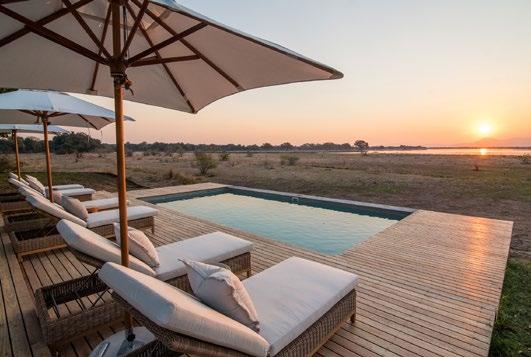
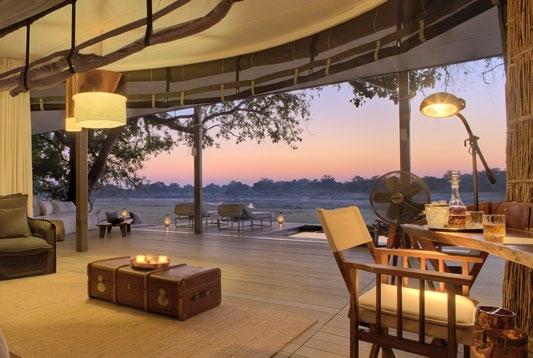
Remote and beautiful, Mana Pools is home to a sizeable population of lions and prey species – including large herds of buffalo, a favourite on the ‘Big Cat Menu’. The park offers excellent lion habitat, with sparse vegetation allowing for good visibility. Mana Pools is famous for walking safaris with fairly relaxed wildlife, which means you can expect to get quite close on foot.
STAY: Set to the east of the Mana Pools area of northern Zimbabwe, Wilderness Chikwenya Camp is a rather chic property with spectacular views of the Zambezi River and the mountains of the Rift Valley Escarpment. The camp, although luxurious is designed to have the lightest possible impact on the environment and The Wilderness Wildlife Trust, established in the late 1980’s has supported a wide variety of wildlife management, research and education projects in Africa so you can be assured that your tourism dollar is being used wisely.
The Okavango Delta is bountiful hunting ground for huge prides of lion and it is believed to be home to the world’s largest population of these big cats. The lions of the Okavango Delta have adapted to their environment as they take to the water in pursuit of their prey. As a result they have highly developed forequarters and look more muscular than most other lions.
STAY: Located just off the northern tip of Chief’s Island, Wilderness Mombo Camp is considered the most fertile area in the Delta, with its mix of habitats attracting large herds followed by numbers and varieties of predators. Rebuilt in 2018, Mombo aims to maintain the integrity of its pristine environment through the use of natural materials, minimal human footprint and 100% solar status, as well as to celebrate their Conservation Purpose and one of their greatest conservation successes: the reintroduction of black and white rhino into the wilds of Botswana.
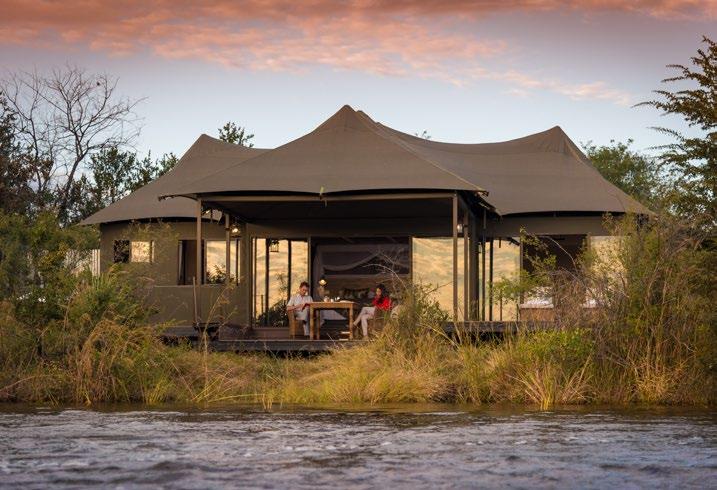
Vusa Sibanda’s journey to becoming a guide began in the Matetsi region of Zimbabwe, where he worked as a tracker for eight years. Roaming along animal superhighways, Vusa would use misplaced twigs, imprints in the sand and naked tree branches to draw a map in his mind, illustrating wildlife movements that would be indecipherable to the untrained eye.
Recognising his talent, recruiters for the FGASA program offered Vusa the opportunity to spend two months in South Africa to complete his guidetraining course. Five years later, Vusa is a highly respected and valued guide at Old Drift Lodge. While his days as a tracker have drawn to a close, Vusa’s boundless knowledge of the bush and his acute attention to detail is reflected in his exquisite wildlife photography.
Vusa’s Instagram page resembles an archive of experiences and safari
moments frozen in time through the lens of his Canon Camera. Scrolling through the images will take you on a sentimental journey back into some of the most wild and untouched places on earth. “One thing I have learned being in the bush, is that every animal, tree and stretch of landscape has its own character”, muses
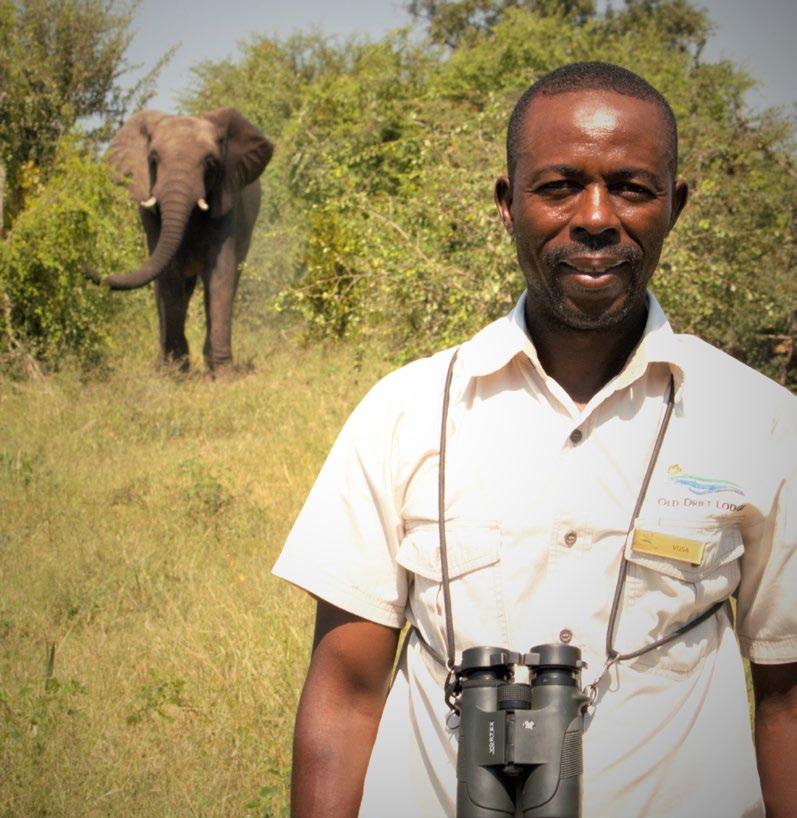
Vusa. “I am in the wilderness everyday and have been since I was young, but I am always excited to go on the river and on a game drive because I know that the wilderness will show me something I have never seen before”.
While many people will scour the National Park looking for big game, Vusa believes that the subject of the photograph is not necessarily what determines a great shot. It is the moment that they spring into action, be this a bird in flight, a lion yawning, or a buck prancing through the trees. Outside his lens you might see a bird nesting or hippo wallowing, but the gentle click of his camera is reserved for the fleeting moment that they take off, or tear open the surface of the Zambezi River, leaving him with a hard copy of that powerful moment.
Vusa’s camera has been an everpresent companion on his ventures into the wilderness and his passion has become a vessel through which he shares his expertise with guests at Old Drift Lodge. In an increasingly digital world, memories of the present are scrolled instantly into the past. However, Vusa’s images will compel you to look closely, look twice and look slowly. Through the glass screen of your phone or desktop, you can peer into his wild world and understand what it looks like in a given moment.
@vusasibanda2002
that represent all that is unique and authentic to a destination, safe in the knowledge that you are giving back to the people and places you travel to, through sustainable travel.

has no value. What’s the value of living out a childhood dream?
To spend time on safari… that’s the ultimate luxury in life.
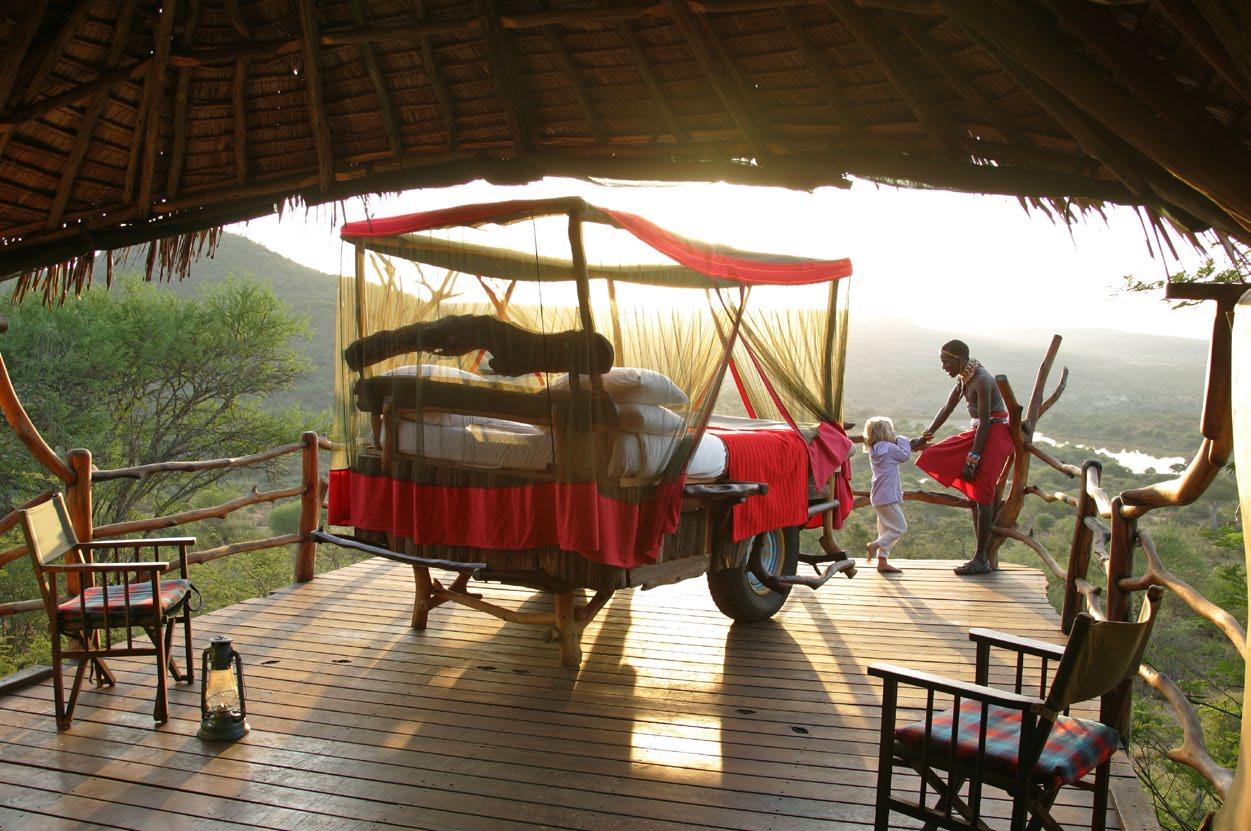
How can you define luxury? Some will say you can determine luxury by the price tag, or how exclusive the trip is. Some might say it has to do with the number of celebrity endorsements an experience has. To me, luxury is about access to the people, places and experiences
‘Luxury’ is sharing breakfast with a hungry 5 metre giraffe. It’s sleeping out under the stars on a comfy treetop perch, listening to the sounds of the African bush. It’s the exploration of modern African cuisine from your cosy boma dinner, or even the extra mile your guides take to ensure you have the best sightings on your game drives. It can be a cold gin and tonic as you watch the sun set behind the savannah, or a seat at a simple bush restaurant made for two, hidden in the African wilderness. It doesn’t have to be the ‘finest’ in the world to be your most cherished experience.
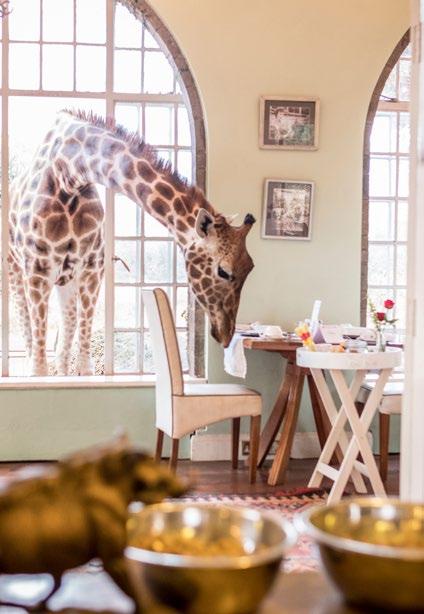
If luxury is intended to evoke a feeling of comfort and to reinvigorate the soul, then nothing is more luxurious than reconnecting with nature alongside the ones you love.
You may pay more for luxury, but price is only painful if that something
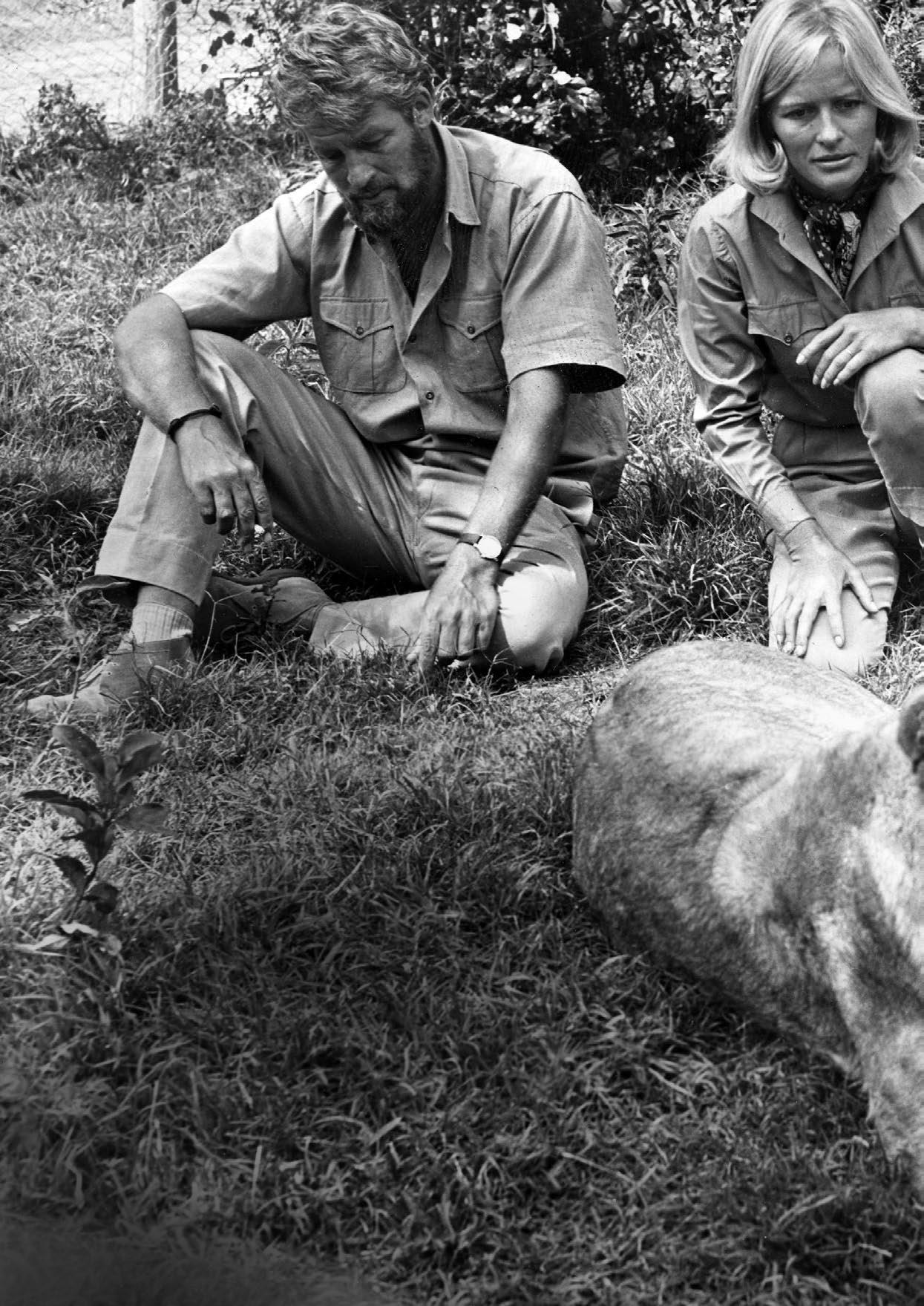 WITH GEORGE VAN WYK, CAMP MANAGER, ELSA’S KOPJE, KENYA
WITH GEORGE VAN WYK, CAMP MANAGER, ELSA’S KOPJE, KENYA


George was born in India in 1906. When he was 18, he and his parents left India with the intention of moving to South Africa however they never got that far. Their ship docked in Mombasa and was due to be at berth there for a while, waiting for more passengers. To occupy their time George’s parents decided to venture into Kenya to explore.
They never left.
The family moved to Naivasha, in the Great Rift Valley, where they bought a coffee farm. George tried his hand at coffee farming, but he is reputed to have said that to him, one coffee bean looked much like another, and he really saw nothing of interest in that. George was a rather eccentric character and dabbled in a few different occupations, but never really found his niche in life until he joined the Game Department. From the 1930’s he was stationed up in the remote Northern Frontier District, or so it was called at the time.
George Adamson was known as ‘Baba ya Simba’ or ‘Father of Lions’.Bill Travers and Virginia McKenna with Elsa, 1966 Joy and George Adamson, Naivasha, Kenya
Joy was a very talented artist and spent many years illustrating much of the indigenous flora as well as all of the indigenous tribes in Kenya. A collection of over 700 of her pieces is showcased at the National Museum in Nairobi today. In 1942, Joy Adamson, who was married to Swiss botanist Peter Bally at the time, was on a specimen collecting and illustrating trip through remote areas of central northern Kenya. It was on this trip that she met George Adamson. The two fell in love and were married later that year.
Ten years later, when George was the Senior Wildlife Warden of the Northern Frontier District, he received a report of a lion that was causing problems north of Isiolo. He went

in to investigate, and he and his party were charged by a lioness that George was forced to shoot in self-defence. Upon examining the lioness, they realised that she was lactating and so they conducted a search through the area, and in a rocky outcrop from which the lioness had emerged, they found 3 tiny cubs, with their eyes barely open. Totally dependent on their mother, George realised that they would be helpless without her. He could not just abandon the cubs to die in the bush, as they had been orphaned by human activity. He collected the cubs and brought them down to the camp that he shared with Joy, which was on the Ura River, forming the southern boundary of what is today Meru National Park.
George and Joy felt that trying to raise all 3 cubs to adulthood would be too much of an undertaking, so when the cubs were strong enough to travel, two of them were sent to the zoo in Rotterdam. One of the cubs remained, a little female whom they named Elsa.
Over the years a deep bond formed between the three of them, however George and Joy’s philosophy had always been that Elsa had been born in the wild, or “born free” and therefore should be returned to the wild. Over time they reintroduced her into the wild, and did so with a degree of success, although she returned to visit them on occasion. Lions raised in captivity find it very difficult to fully integrate back into the wild as their hunting skills are lacking and they have no fear of humans.
Elsa went on to have a set of cubs with a wild male among the lions that George was able to introduce her to. Sadly, Elsa didn’t live a full life, she died from a tick born parasite in 1961, when she was only 5 years old and her cubs were just 3 years old. George and Joy tried to have as little as possible to do with the raising of Elsa’s cubs but because there had been some contact they chose to release the cubs in an area where they would run no risk of encountering humans, whom they would associate as “friends”.
They chose the Serengeti in northern Tanzania - for a couple of reasons, firstly because in those days there were not the number of camps and lodges in the Serengeti that there are today; but also, with the migration coming through the Serengeti, it would have been easy hunting and therefore an easier transition back into the wild for the youngsters.
Elsa’s cubs were successfully released in the Serengeti in 1962.

Joy’s most successful book ‘Born Free’ was published in 1960. She then went on to write ‘Living Free’ in 1961, followed by ‘Forever Free’ in 1962. The Trilogy tells the whole fascinating story of Elsa, her cubs and their eventual release in Tanzania. We have every reason to believe that the cubs lived out full, normal and productive lives in the Serengeti, producing many cubs of their own.
Elsa’s story was the basis for the award-winning film, ‘Born Free’, premiered in 1966, starring Virginia McKenna and Bill Travers. Virginia and Bill later went on to found the Born Free Foundation; originally the Zoo Check Foundation in 1984 and renamed the Born Free Foundation in 1988. Bill passed away in 1994 and Virginia continues to be very actively involved in the Foundation.
Elsa is buried under a giant fig tree, not far from the site of George and Joy’s original camp on the southern border of Meru National Park. Elsa’s grave is a site that guests can visit from Elsa’s Kopje today.

ELSAHAD
BEEN BORNIN
THE WILD, OR “BORN FREE” AND THEREFORE SHOULD BE RETURNED TO THE WILD.Elsa the lion
In July 1999, Elsa’s Kopje threw open its doors, as a sanctuary from which to explore Elsa’s home of Meru National Park. The iconic, elegant safari camp is sculpted into Mughwango Hill, above the site of George and Joy’s original camp where he raised his orphan lions and released them back into the wild. 20 years later, and Born Free star Virginia Mckenna still continues to visit Elsa’s Kopje a couple of times a year, along with her son Will Travers - President of The Born Free Foundation.

Together the Adamsons changed attitudes to wild animals, and in particular conservation, all around the world. Not only did they dedicate their lives to wildlife conservation but all the royalties from Joy’s books and films were paid into The Elsa Conservation Trust, which has gone on to fund the creation of famous parks and reserves at Meru, Samburu, Shaba and Hell’s Gate, amongst other worthy projects.
Elsa’s Kopje works with the local community through the Land and Life Foundation, supporting a local community school near Ura Gate - not far away from George and Joy’s original camp. The camp has a scholarship program, covering 75% of the school fees for 2 students each year; as well as a number of other wildlife and conservation awareness programs. The Guides go to the school from time to time to
teach the children about wildlife conservation, and it is a firm belief that there is no greater investment in the future than to get today’s children passionate about conservation. These are tomorrow’s policy makers, after all.
Lastly, Elsa’s Kopje work closely with the Born Free Foundation on lion monitoring, with our Guides out in the field all the time, observing and keeping field notes, maintaining close communications on pride dynamics and activities.
Experience ‘truly wild’ Africa staying at the exquisite, award winning safari camp, Elsa’s Kopje, meaning ‘Elsa’s small, rocky hill’.
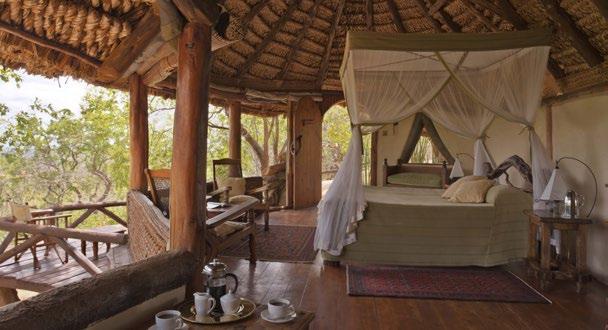
In 1971, George Adamson reintroduced Christian the lion back into the wild when he was returned to his ancestral home of Kenya, from London. Christian’s emotional reunion with his London family was caught on video 9 months later when they travelled to Kenya to visit him.

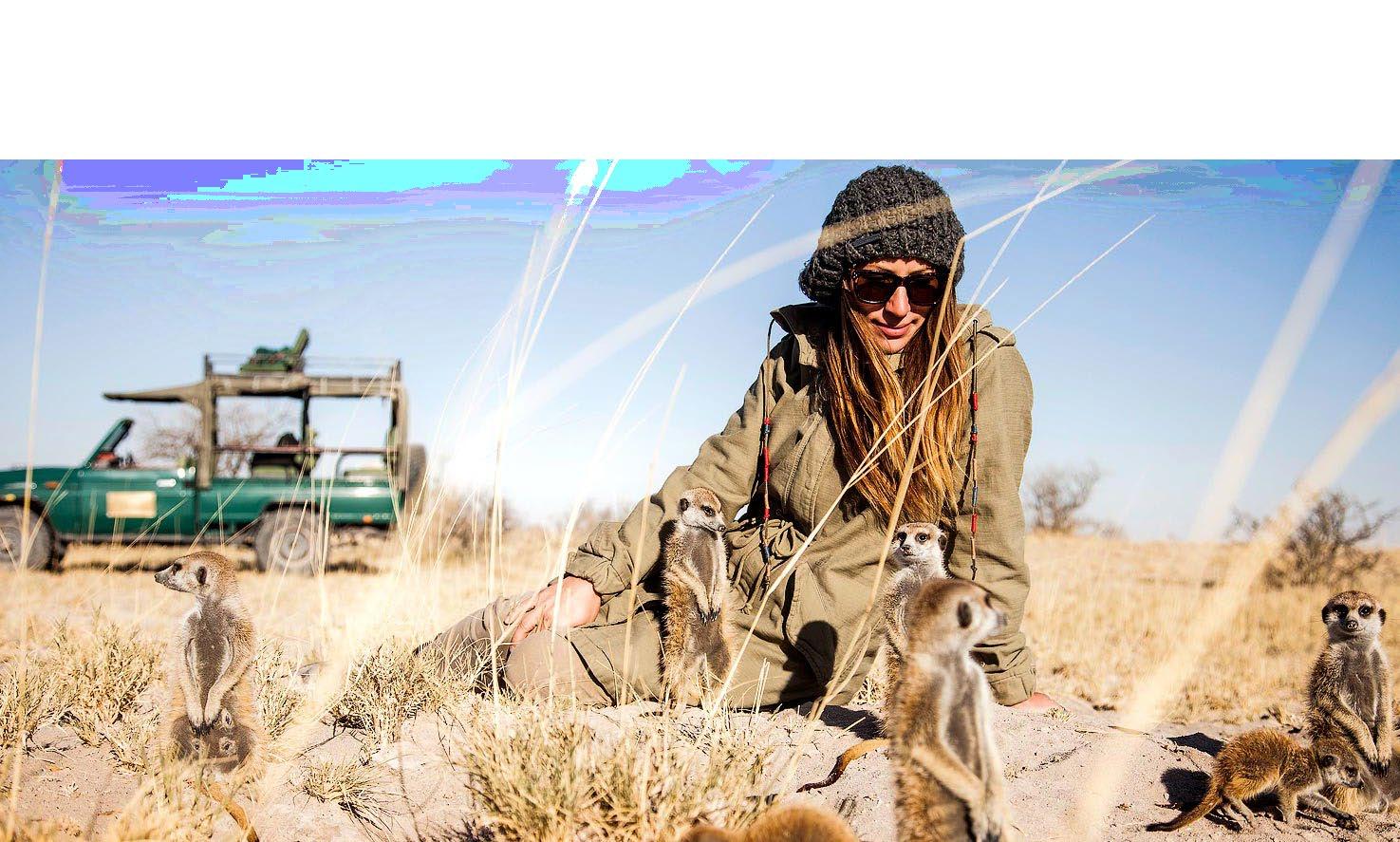
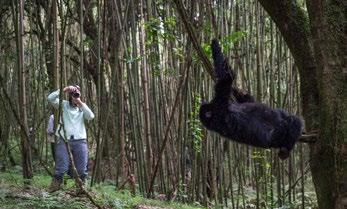
It’s a hot topic, and one that requires a great deal of consideration. Wildlife encounters can be an incredibly fulfilling experience for tourists in Africa, but we need to stop and think before we participate.


By ‘animal encounter’ we don’t mean observing animals on a game drive, or on an ordinary game-viewing experience but rather an activity where interaction with the animal is the main focus, such as gorilla trekking perhaps, or visiting an elephant orphanage.
Bench Africa is fully committed to ensuring that the experiences that you enjoy with us in Africa have the animals’ welfare at heart. We have banned all elephant rides from our itineraries, as well as walking with lions and petting cubs. Instead, we encourage travellers to seek out more ethical alternatives. The animal encounters that we support have been hand-picked by our team of Africa experts. We are constantly, and vigilantly reviewing these, basing our decisions on customer feedback and our own regular visits to Africa.
Unfortunately, our wildlife is unable to stand up for themselves, so it’s up to us to take this stance and make the right choices for them. We need to support the
initiatives that not only have their heart in the right place, but those that are doing things by the book.
Fortunately, it’s possible to interact with African wildlife in a way that protects, conserves and enhances their existence, as long as you know where to go. Pictured are some of our favourites.
“Walking with lions cause these wild animals a lifetime of suffering. And by participating, tourists are inadvertently helping to fund their ongoing torture. Hand-reared, lion cubs are separated from their mothers at a very early age. Like all mammals, lions depend on their mothers as they grow up and they form an attachment. Separated cubs become distressed and fearful while the mothers become distraught at the removal of their cubs.”
– World Animal Protection
